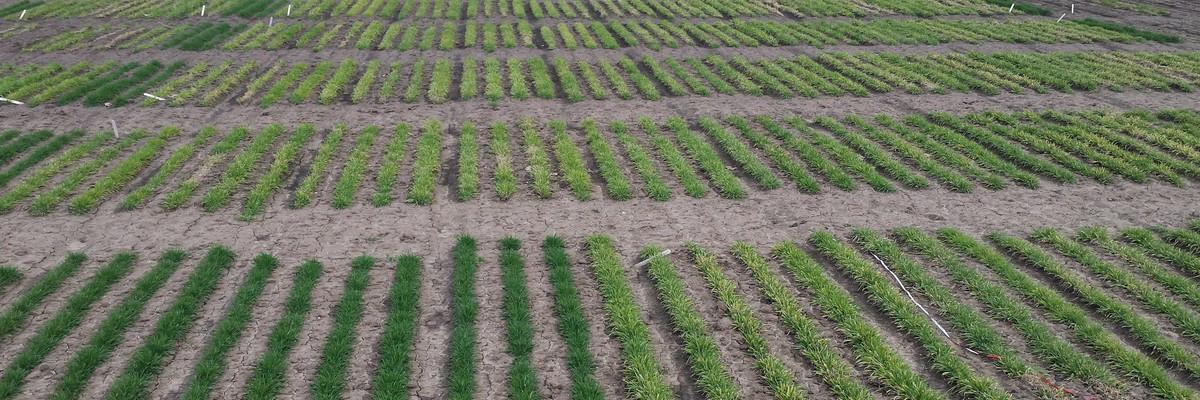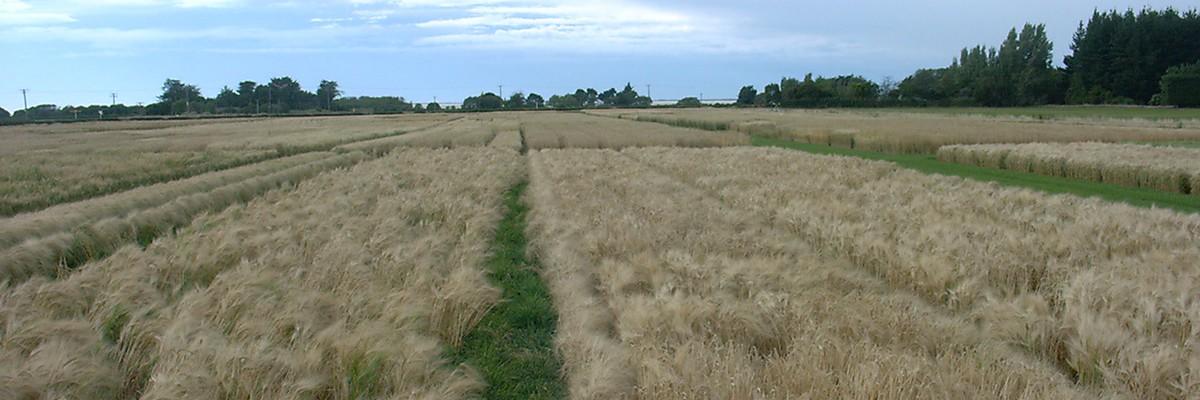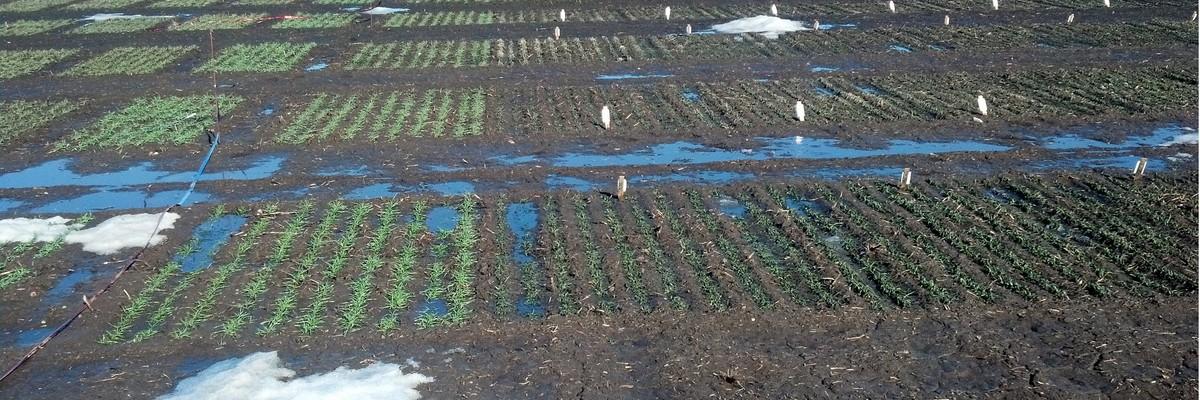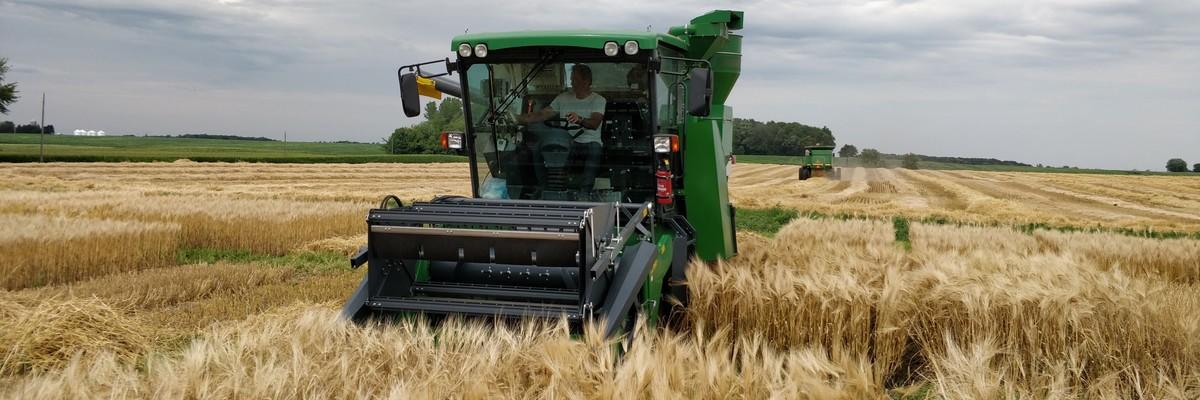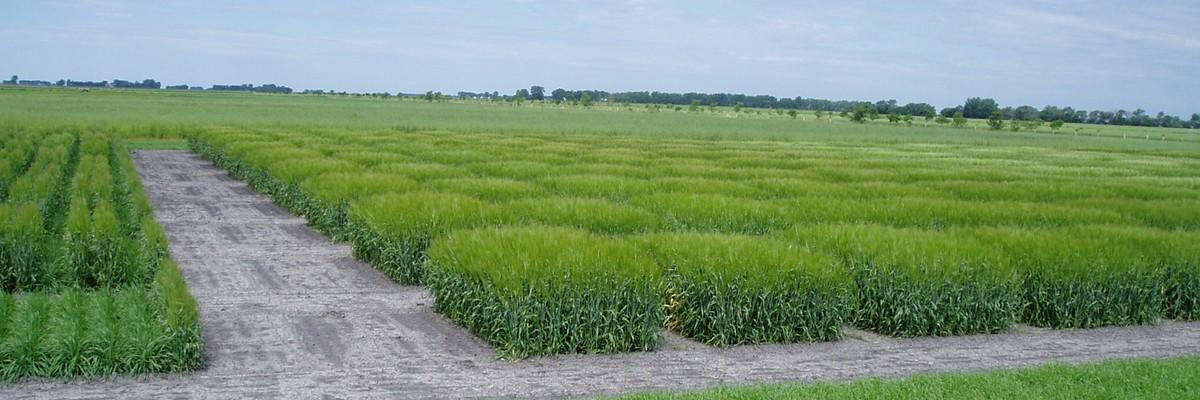On this page:
- Community Outreach
- Diseases of Barley
- Hulless Barley
- Spring Barley
- Winter Barley
- Winter Malting Barley Trial (WMBT)
Spring Barley
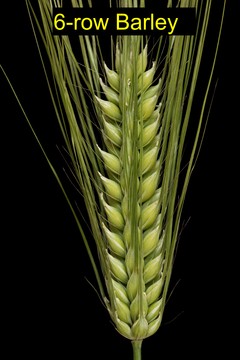
The University of Minnesota Barley Breeding program is over 100 years old; with it's first major variety release in 1918.
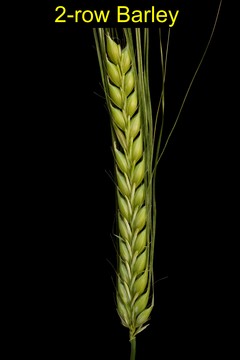
Historically, the program's focus was on breeding 6-row malting barley. In the early United States barley growing boom, acreage was mainly in Iowa, Wisconsin and Minnesota. Six-row barleys were more adapted to those growing regions therefore US maltsters and brewers adapted to using the barley available.
With the boom of the craft brewing industry in the last decade, our breeding focus is now on 2-row malting barley.
All new varieties from the University of Minnesota breeding program must meet the American Malting Barley Association (AMBA) quality standards.
Major releases:
- Manchuria, 1918
- Morex, 1978
- Robust, 1984
- Stander, 1993
- Lacey, 2000
- Quest, 2008
Winter Barley
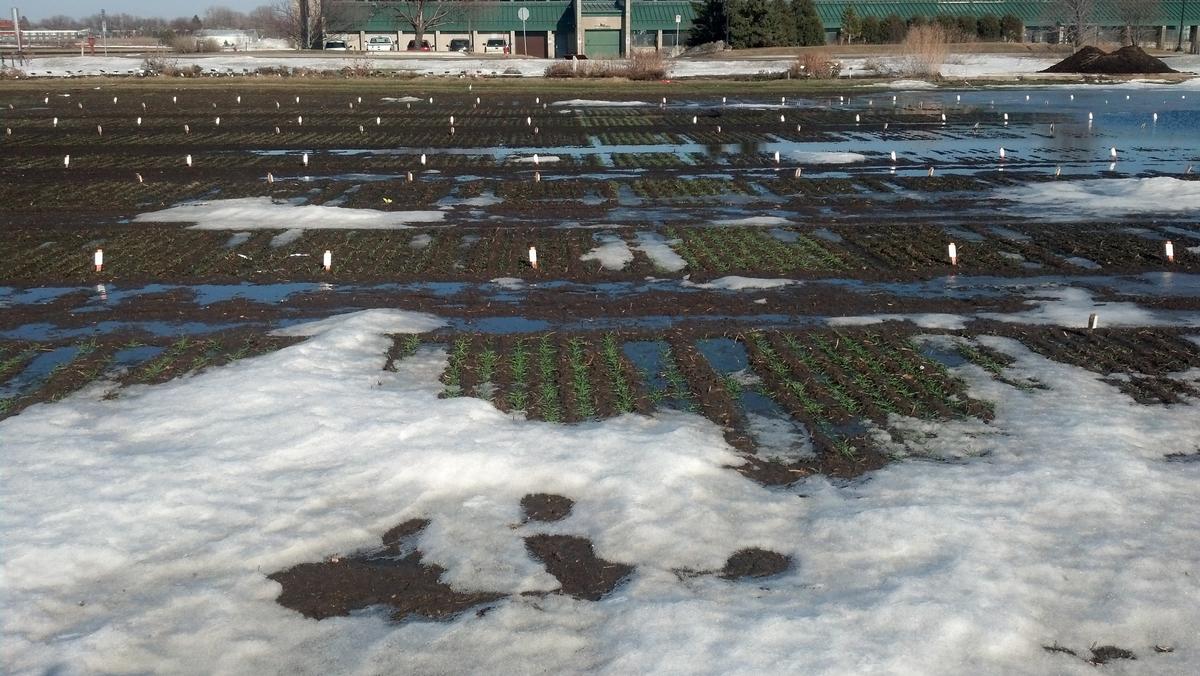
Most barley grown in Minnesota and the upper Midwest is spring-planted. However, fall planting of winter barley could provide benefits to farmers, end-users, and the environment. Among these potential benefits are: higher yield, avoiding delayed planting in spring due to wet soils, providing winter cover to reduce soil erosion, better nutrient cycling, weed suppression, and avoiding some summer diseases. The major challenge for winter barley in Minnesota is surviving our cold winters. Barley is less “winter hardy” than winter wheat or winter rye. Our breeding program is focussed on understanding the genetics of winter hardiness and breeding new varieties that will successfully over winter and deliver these benefits. Winter barley is one of the crop development projects under the University of Minnesota’s Forever Green Initiative to create continuous cover cropping systems.
Winter Malting Barley Trial
Part of our winter barley breeding effort includes organizing the Winter Malting Barley Trial (WMBT). Please click here to learn more about that trial.
Hulless Barley
Hulless or “naked” barley is a market class where the hull is separated from the kernel during threshing similar to wheat. Naked barley has found uses in food, feed, and biofuel. Recently, naked barley has been used in malting to produce beer. It’s potential for multiple uses could give producers more options for marketing their grain.
Currently, this research is supported by a USDA OREI project entitled “Multi-use naked barley for organic systems”. Data is available on The Triticeae Toolbox (T3):
Spring Planted Diversity Trial
Diseases of Barley
The Smith Lab works with collaborators in the Dill-Macky Lab, Steffenson Lab, and USDA-ARS Cereal Disease Lab to evaluate many diseases that affect Barley in the upper Midwest
Fusarium Head Blight (FHB): This work is supported by the US Wheat and Barley Scab Initiative
Bacterial Leaf Streak (BLS)
Spot Blotch
Net Blotch
Stem Rust
Barley Yellow Dwarf Virus
Community Outreach

As a breeding program that focuses on malt quality we are happy to have relationships with farmers, brewers, and maltsters in the community.
University of Minnesota & Extension:
University of Minnesota Extension: Regional Sustainable Partnerships
University of Minnesota: Steffenson Lab
University of Minnesota: Dill-Macky Lab
Farmer Cooperatives:
Practical Farmers of Iowa (PFI): Small grains variety selection tool
Malting & Brewing Industry:
Rahr Malting Co.: Malt quality testing
Shell's Brewery: On-Brewery variety trial
Sprowt Labs: Exploring heirloom barley varieties for malting and brewing
Vertical Malt: Scaling up testing of new varieties for craft brewing
